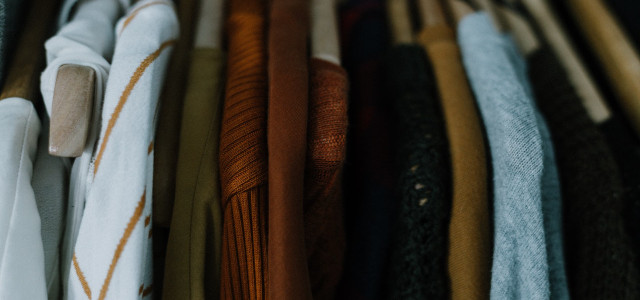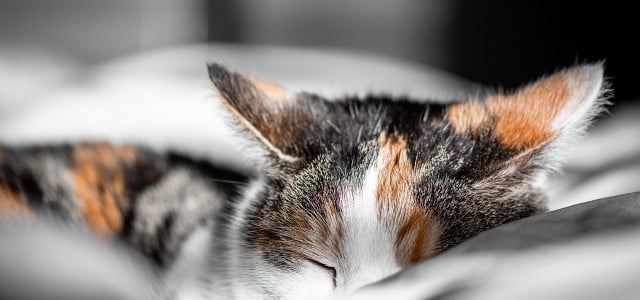Wondering why there are small holes in your clothes? Moths are the easiest culprits to blame, but they’re not always responsible. We’ll look at the various reasons why you have holes in your clothes and what you can do about it.
If you find small holes in your shirts, tops or other clothes, it’s best to act quickly. Finding the reason your garments have holes can prevent more snags and rips from showing up. There are various causes for holes in clothing, such as:
- Belts
- Zippers
- Bras
- Your washing machine
- Catching on rough surfaces
- Chlorine bleach
- Clothing moths
Let’s take a look at each reason and see what you can do to prevent this issue.
Belts, Zippers and Bras Can Cause Holes in Clothes
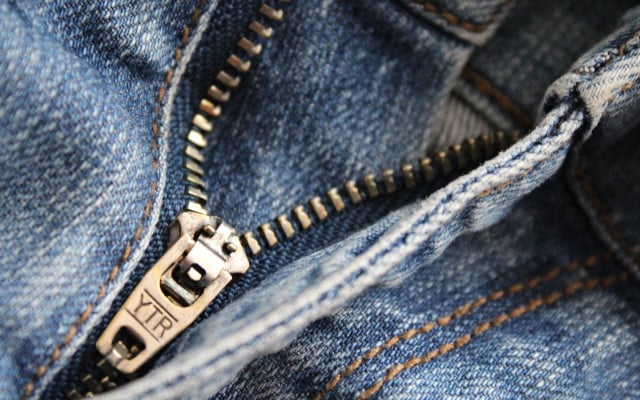
Belts, zippers and bras can be responsible for small holes in clothing due to their sharp edges.
Belt Buckles: Did you find holes at the bottom of your t-shirts? Your belt may be the reason. It can wear holes in shirts and sweaters as the buckle rubs against the material or gets caught in it. To avoid this, either go without a belt, smooth the buckle’s rough edges with sandpaper or change its position daily. If you move it a little to the side on some days, it won’t always rub on the same area of your clothing.
Zippers: Zippers can easily get caught in clothing and cause holes. When throwing your jeans in the wash, make sure you do the zippers up. That way, clothes are less likely to snag.
Bras: if you don’t do the clasp up on your bra before throwing it in the washing machine, those little metal prongs can wreak havoc on your clothes. Some bras will unclasp in the washing machine, so you may want to wash them in a washing bag. If you wear bras with an underwire and have noticed the wire is missing, check your washing machine. It can get stuck between the drum and the side and stick out during the cycle, causing clothing to catch and tear.
Your Washing Machine Could Be the Problem
You’re probably wondering how a washing machine can cause your clothes to rip. Here’s the explanation:
Overloading: if you put too many clothes in your washing machine, they might not get clean. Even worse: overloading can also cause your clothing to snag on zippers, buttons and other decorative elements. So while it saves electricity and water to only run your machine when it’s full, avoid overstuffing it and always turn garments with buttons or beads inside out.
Spin Cycle Speed: spinning too quickly can cause clothing to be pulled and stretched, which causes fibers to wear and tear. Weak fibers like cotton and silk are especially susceptible to breaking, causing small holes in your clothes. Our recommendation: wash sheets and towels on the maximum spin cycle, jeans on high, cotton clothes on medium and silk/delicates on a low spin cycle.
You can also start drying laundry naturally, which reduces general wear-and-tear and can lower your energy bill.
Interested in leveling up your laundry game? Check out these Tips & Tricks for Hand Washing Clothes Like A Pro.
Moths Can Eat Holes in Clothes
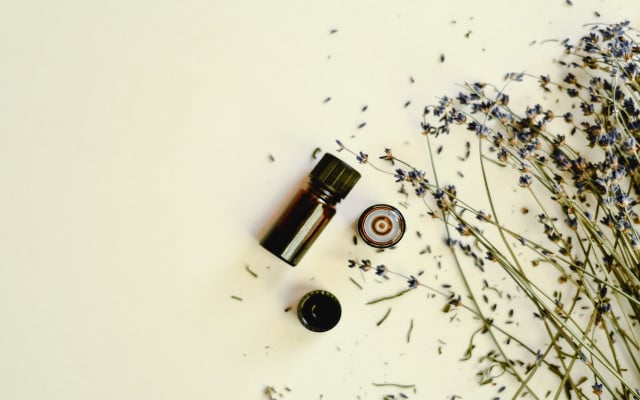


Moths in your closet are probably the most common cause of small holes in your clothes. The fibers of your clothes serve both as food and building material for moths to hatch their young. Animal materials such as leather, silk and wool are often affected. That said, moths aren’t picky and may also mess with your mixed fabrics.
You can use pheromone traps to combat clothing moths — they are available in most drugstores and hardware stores. However, these only attract the male moths; the female moths will continue to lay eggs. So, it makes more sense to use these two methods:
- Dried Lavender: You can put dried lavender in a mesh bag and hang it in your closet. The scent will drive away moths.
- Essential Oils: You can also use essential oils to repel moths. We recommend using organic mint or lavender oils.
In case of a bad moth infestation in your closet, wash your clothes on a warm cycle and wipe out the wardrobe with vinegar, and read our guide How to Get Rid of Clothes Moths: Easy DIY Moth Repellent.
Are You Rubbing Against Rough Surfaces?
Nails, un-sanded wood, brick and unfinished stone surfaces are surprisingly abrasive. If you accidentally rub against them, they can cause holes in your clothes, which become even more pronounced after washing. If the surface in question is part of your furniture, you may want to sand it off or cover it.
Chlorine Bleach — Ecologically Harmful and Hard On Clothes
Many people use chlorine bleach to whiten their clothes, remove stains and disinfect laundry. If you use it incorrectly or in large quantities, bleach can cause holes in your clothing.
Importantly, there are much more environmentally friendly alternatives to bleach that achieve the same results. Bleach is a type of chemical compound called organochlorine, which is rarely found in nature, and takes a long time to decompose. For many household and cleaning purposes, DIY remedies like citric acid or vinegar — especially apple cider vinegar — or baking soda do the job well.
How to Repair Small Holes in Clothing
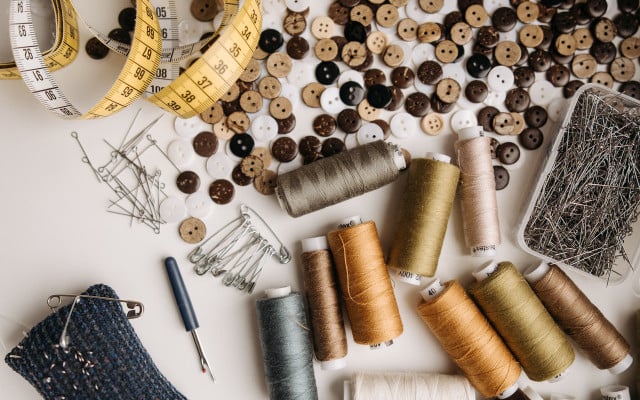


Finding small holes in your clothes can be a pain, but that doesn’t mean you need to throw the entire garment out. It is much more sustainable to simply repair the hole. Even if you’re not adept with a needle and thread, you can still easily fix your clothes with a special fusible material for ironing called fusible web. You can find it at Walmart and most craft stores in a variety of colors and weights — choose the weight most similar to the item you’re trying to fix.
Here’s how to use it:
- First, iron the clean fabric and let it cool. You can use an ironing board or even just a tea towel on a hard surface.
- Turn the garment inside out and place it on your ironing surface.
- Cut a small piece of the fusible web that generously covers the hole.
- Now press the hole together and place the fusible or lining fabric on top of it. Place a damp tea towel over it.
- Using the “Wool” setting, place the iron on the fabric for about ten seconds.
Alternatively, you can mend small holes using a needle and thread — learning how to darn socks, for example, is an invaluable life skill. You can also try your hand at visible mending.
Important Information regarding Health-related Topics.
** Links to retailers marked with ** or underlined orange are partially partner links: If you buy here, you actively support Utopia.org, because we will receive a small part of the sales proceeds. More info.Do you like this post?






